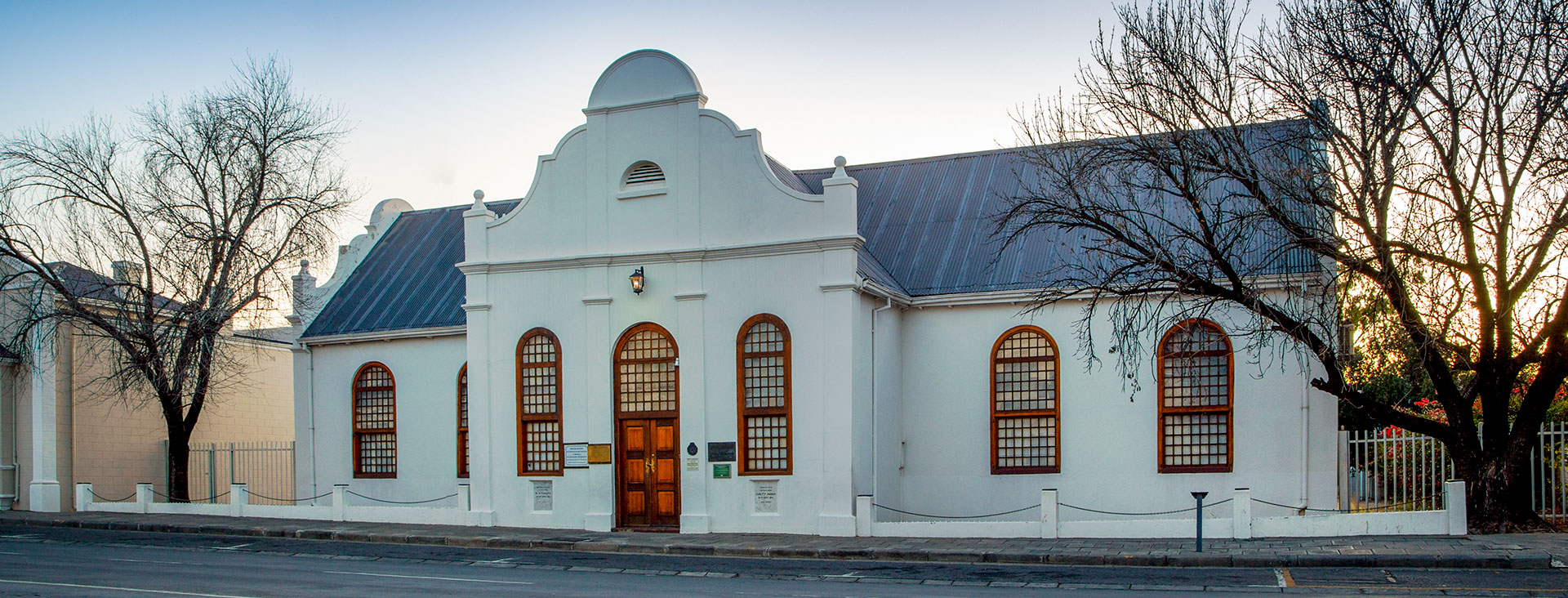
Hester Rupert Art Museum Graaff-Reinet
Located in Church Street, Graaff-Reinet, is housed in the fifth oldest church building in South Africa. It was built and consecrated as a Dutch Reformed Mission Church in 1821, 35 years after the founding of the village of Graaff-Reinet in 1786. It is also one of the three remaining Dutch Reformed Church buildings built on the traditional cruciform plan.
The building was saved from demolition in 1965 when it became known that a petroleum company was negotiating for its purchase to erect a filling station of the site. When Dr Anton Rupert, a son of Graaff-Reinet and Chairman of the Rembrandt Group of companies, heard about this he immediately entered into negotiations with the petroleum company who, fortunately, realised that to destroy the building would be a grave error.
The Rembrandt Group then acquired the building and Dr Rupert undertook to have it restored and converted into an art museum on condition that a sufficient number of South African artists would donate for this purpose an example of their best work. This appeal, made in personal letters, had an immediate and enthusiastic response. On 26 July 1966 the art museum, with a total of 90 paintings and sculptures donated by 83 artists, was opened by the then State President, Mr C.R. Swart, and given in perpetual trust to the Town Council of Graaff-Reinet. In gratitude, the Council named the museum the Hester Rupert Art Museum in honour of Dr Rupert’s late mother. The building was declared a national monument on 4 October 1968.
Since then, more artists have donated works to the museum and to date the collection comprises 126 works by 106 artists. Most of the collection is devoted to works produced by artists working in the 1960’s who responded positively to the call to save the building for posterity. This collection should not be regarded as representative of 20th Century South African artists but rather as a small, focused collection, as which it remains highly significant.
It is fitting and certainly commendable when a town and its people honour those who preceded them. Likewise, that which is of historical and cultural value should be held in safe-keeping for posterity.
To this criterion the HESTER RUPERT ART MUSEUM, named after the mother of Dr Anton Rupert, complies without doubt. Graaff-Reinet hereby pays homage to a worthy woman and mother of our town, while the art collection housed here represents striking examples of original South African works of art of the 20th century. (Inscription beneath the portrait of Hester Rupert)
